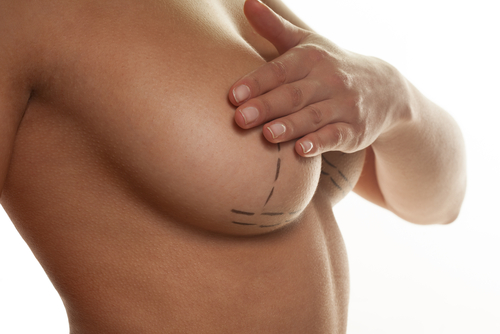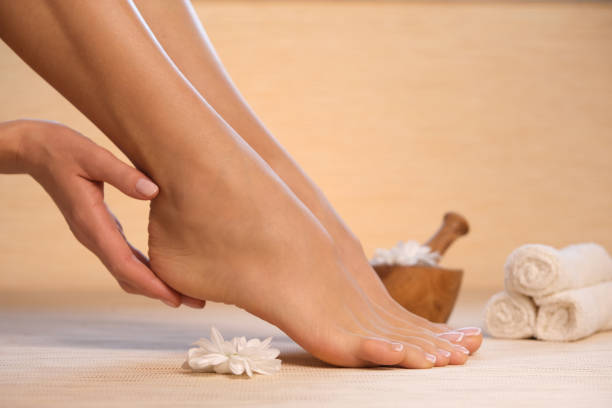BBL body sculpting is reshaping the way we approach personal aesthetics with butt enhancement, but what if you could achieve similar curves without going under the knife? By integrating squats into your routine or considering a virtual consultation, you might find non-surgical options to sculpt your physique. Welcome to the world of non-invasive alternatives that promise to target fatty tissue and redefine your curves through virtual consultation, without neglecting the benefits of squats. As you navigate through an ocean of body contouring options, understanding how these procedures work on fatty tissue is key to setting realistic expectations for your transformation journey. A virtual consultation can clarify which parts of your body can be sculpted in a way that aligns with your goals.
In this post, we’ll dive into modern techniques that are targeting real fat and reshaping fatty tissue, changing the game for those seeking a more sculpted physique from behind, without the risk of infection. From traditional BBL breakthroughs that sculpt using real fat to cutting-edge treatments without anesthesia or downtime, get ready to explore how today’s technology can help craft the look you’ve been dreaming of.
BBL Body Sculpting Overview
Surgical Process
The BBL surgical process starts with anesthesia. This keeps you comfortable during the surgery. The surgeon then removes fat from other body parts, like your belly or thighs. They use a method called liposuction for this.
Once they have enough fat, they clean and prepare it for transfer. The cleaned fat is injected into your buttocks. They do this in layers to create a smooth, natural look.
Fat Transfer
Fat transfer plays a big role in BBL body sculpting. It’s what gives the buttocks more volume and shape. Surgeons take your own body fat and put it where it’s needed most.
This technique has two benefits: reducing unwanted fat elsewhere and enhancing your buttocks’ appearance.
Risks and Benefits
Like any surgery, BBL comes with potential risks:
-
Infection
-
Scarring
-
Pain
There are also rare but serious risks like blood clots or fat embolism.
Despite these risks, many choose BBL for its benefits:
-
Improved body contours.
-
A more balanced figure.
-
Long-lasting results if you maintain a stable weight.
Remember that results vary from person to person based on their bodies and lifestyle choices post-surgery.
Understanding EMSCULPT in Body Sculpting
EMSCULPT Technology
EMSCULPT uses high-intensity focused electromagnetic (HIFEM) technology. This stimulates muscle contractions. These are not like regular exercise contractions. They are much more intense. Muscles have to adapt to this stress. As a result, they rebuild and strengthen.
The process is non-invasive and requires no recovery time. A session typically lasts about 30 minutes. During treatment, patients can feel their muscles contracting powerfully but without pain.
Traditional Differences
Traditional body sculpting methods often focus on removing fat or tightening skin. Methods include liposuction or laser treatments. But EMSCULPT works differently by targeting muscle tissue directly.
It does not just reduce fat; it also builds muscle mass for better definition and tone which traditional methods may not offer as effectively.
Target Areas
EMSCULPT is suitable for various body areas where toned muscles are desired:
-
The abdomen
-
Buttocks
-
Arms
-
Calves
-
Thighs
These target areas benefit from the strengthening effects of HIFEM technology provided by EMSCULPT treatments.
Comparing BBL and EMSCULPT for Enhanced Contours
Procedure Goals
BBL, or Brazilian Butt Lift, aims to enhance the buttocks’ size and shape. It involves fat transfer from other body areas to the buttocks. The goal is a fuller look.
EMSCULPT focuses on muscle toning and fat reduction. This non-invasive treatment uses electromagnetic energy to contract muscles in targeted areas like abs or glutes.
Both procedures shape your body but through different methods. BBL adds volume while EMSCULPT tones muscles.
Recovery Time
After a BBL, recovery can take weeks. You must follow strict post-op guidelines such as avoiding sitting directly on your buttocks.
With EMSCULPT, there’s no downtime. You can return to daily activities immediately after treatment sessions which typically last 30 minutes.
The choice depends on how quickly you need to bounce back into routine life. If time is scarce, EMSCULPT may be more appealing due to its non-surgical nature.
Suitability Factors
Not everyone is suitable for a BBL surgery since it requires enough excess fat for transfer. Thin individuals might not have this option available.
On the contrary, most people can opt for EMSCULPT regardless of their starting point; it works well even if you’re leaner and wish to define muscles further.
Consider what you want out of body contouring when choosing between these treatments—volume enhancement or muscular definition?
Emsculpt Treatment Process and Experience
Session Expectations
EMSCULPT treatments are non-invasive. They help build muscle and burn fat. During a session, you lie down while a device is placed on the target area. The machine induces muscle contractions through electromagnetic energy.
You might feel your muscles respond as if you’re working out intensely. But there’s no sweat or strain like in the gym. Most patients find it odd but not painful.
Male BBL and Non-Surgical Options
Tailored Enhancements
Male BBL, or Brazilian Butt Lift, is a surgical procedure. It reshapes the male buttocks. Doctors remove fat from one area of the body. They then inject it into the buttocks. This creates a more defined and muscular appearance.
Men seek this procedure for various reasons. Some want to enhance their physique’s proportionality. Others aim for an athletic look that gym workouts cannot achieve alone.
The process begins with a consultation with a plastic surgeon. The surgeon evaluates the patient’s goals and body type. Then they create a custom plan tailored to masculine aesthetics.
Non-Surgical Benefits
Non-surgical options are gaining popularity among men too. These alternatives offer contouring benefits without surgery risks.
Treatments like Emsculpt build muscle while reducing fat non-invasively. Emsculpt uses electromagnetic energy to induce powerful muscle contractions. These contractions strengthen muscles beyond regular exercise capabilities. This technology can target areas difficult to tone through traditional methods.
Other non-surgical treatments include CoolSculpting and SculpSure. CoolSculpting freezes away unwanted fat cells in targeted areas. SculpSure, a BBL Body Sculpting technique, uses laser technology to melt away fat cells over time. Both options require no downtime, unlike surgical procedures.
Growing Trend
Body sculpting for men is becoming more common every year. Men are increasingly seeking ways to improve their bodies’ aesthetics. They appreciate results that look natural but highlight masculinity.
Social media plays a role in this trend by showcasing ideal male forms. Celebrities openly sharing their cosmetic procedures also influence public perception.
As demand grows, so does the availability of male-specific treatments in clinics worldwide.
Tips for Optimal BBL Recovery and Results
Post-Operative Care
After Brazilian Butt Lift (BBL) surgery, careful attention to post-operative care is crucial. The first few days are critical for healing. Patients should follow their surgeon’s detailed instructions on how to sit or lie down without putting pressure on the buttocks. This usually involves using a special pillow or avoiding sitting altogether.
It’s also important to wear a compression garment as directed. This helps reduce swelling and supports the new contours of your body. Avoid strenuous activities and heavy lifting for several weeks after surgery.
Lifestyle Adjustments
Making lifestyle adjustments post-BBL is key to maintaining results. Once cleared by the surgeon, patients should gradually reintroduce physical activity into their routine. Start with light walking to promote circulation.
Healthy eating habits can support recovery and help maintain results long-term. Focus on foods rich in vitamins, proteins, and antioxidants that aid in tissue repair and overall health.
Surgeon’s Instructions
Following your surgeon’s instructions cannot be overstressed for achieving the best outcomes from a BBL procedure. These guidelines typically include:
-
Keeping all follow-up appointments.
-
Taking prescribed medications as instructed.
-
Watching out for signs of infection or complications.
Ignoring this advice can lead to poor healing, asymmetry, or even serious health risks like fat embolism syndrome where fat enters the bloodstream and causes blockages.
Remembering these tips will not only aid in a smoother recovery but will also ensure you enjoy your new figure safely and satisfactorily.
Timeline for BBL and Emsculpt Outcomes
BBL Results
After a Brazilian Butt Lift (BBL), patients are often eager to see their new body shape. The timeline for visible results can vary. Initially, post-surgery swelling may obscure the true outcome. However, within three to six months, most of the swelling subsides and the transferred fat stabilizes.
Patients typically notice a change in their silhouette shortly after surgery. But it takes time for the final results to settle in. The body needs to heal and adapt to its new contours. By following recovery tips from the previous section, you can help ensure a smoother transformation.
Emsculpt Progress
Emsculpt, on the other hand, offers faster gratification without invasive techniques. Users might observe initial effects right away due to muscle contractions during treatment sessions. These early changes are subtle but encouraging.

For optimal outcomes with Emsculpt treatments, patience is key as well. It usually takes about two to four weeks after completing all sessions before significant improvements appear in muscle tone and fat reduction.
Lasting Effects
When considering any cosmetic procedure like BBL or Emsculpt, understanding how long results last is crucial.
-
For BBLs: If proper care is taken including maintaining weight and healthy lifestyle habits – results can be long-lasting.
-
With Emsculpts: Regular follow-up sessions combined with exercise will help maintain muscle definition over time.
Both procedures require commitment beyond initial treatments for sustained benefits. The longevity of both depends largely on individual lifestyles post-procedure.
Evaluating Brazilian Butt Lift Alternatives
Non-Surgical Pros
Non-surgical butt lift options offer various benefits. Sculptra and similar injectables provide a less invasive approach compared to BBL. They require no surgery, meaning recovery is quicker. Patients can often return to daily activities sooner.
These methods also carry fewer risks than surgical procedures. There’s no need for anesthesia, which reduces complications related to sedation. Plus, there’s a lower chance of infection since the skin isn’t extensively cut.
Cons Considered
However, non-surgical treatments have drawbacks too. Results may be subtler and not as long-lasting as those from a BBL. Over time, the body absorbs injectables like Sculptra, diminishing their effect.
Also, multiple sessions are usually needed to maintain results. This could lead to higher costs over time compared with one-time surgical expenses of a BBL.
CoolSculpting Edge
CoolSculpting, a non-surgical BBL Body Sculpting technique, stands out for its unique method of reducing unwanted fat by freezing it away without the need for surgery or downtime post-treatment.
It works well on small pockets of fat but might not give the volume increase some seek in buttock enhancement—a critical point when considering your options against traditional BBL outcomes that typically offer significant volume enhancement after recovery.
Injectable Options
Other injectable treatments work by stimulating collagen production in the buttocks area—leading gradually to increased fullness and firmness without major surgery or extended downtime associated with traditional BBLs.
The effects can be subtle at first but build up over several treatment sessions—something important for patients who prefer gradual changes rather than immediate transformations seen after surgical enhancements such as squats might produce over time through muscle growth instead of direct augmentation techniques used in surgeries or injections-based methods alike.
Choice Factors
When choosing between BBL and other methods several factors come into play:
-
Desired outcome – dramatic change vs subtle improvement.
-
Tolerance for risk – comfort with undergoing surgery vs preference for minimally invasive techniques.
-
Budget considerations – upfront cost versus ongoing maintenance expenses.
Cost and Value of BBL Versus Non-Surgical Methods
Price Comparison
BBL, or Brazilian Butt Lift, is a cosmetic procedure that reshapes the buttocks by transferring fat from other areas. It often has a higher upfront cost than non-surgical treatments. The average cost of BBL can range between $3,000 to $10,000. This varies based on location, surgeon’s experience, and the complexity of the surgery.
Non-surgical methods like fillers or Sculptra injections are less expensive per session. They might cost anywhere from $500 to $5,000 depending on the number of sessions needed. However, these treatments may require multiple visits to maintain results.
-
BBL: Average price range is $3k – $10k
-
Non-surgical: Per session costs around $500 – $5k
The choice between them isn’t just about money but also about desired outcomes and personal circumstances.
Long-Term Value
When considering long-term value, BBL offers permanent results if maintained with a stable weight. This means after recovery; you won’t need regular follow-ups for the same area unless you desire further alterations due to weight changes or aging.
On the contrary, non-invasive methods usually provide temporary enhancements lasting several months up to two years before requiring retreatment. Over time this could lead to more expenditure as consistent upkeep is necessary for sustained effects.
-
Permanent solution: BBL (with stable weight)
-
Temporary enhancement: Non-surgical options (require ongoing treatment)
Considering your goals and how often you’re willing to undergo maintenance can guide your decision towards either method’s value over time.
Insurance Factors
Most insurance plans do not cover cosmetic surgeries like BBL because they are elective procedures without medical necessity. You will likely have to pay out-of-pocket or arrange financing options available through some clinics.
For non-surgical approaches too insurance typically does not apply since they’re considered aesthetic enhancements rather than health requirements.
Both surgical and non-invasive procedures may come with additional costs such as consultations fees or post-treatment care which should be factored into overall expenses.
Conclusion
BBL body sculpting and its non-surgical counterpart, EMSCULPT, offer unique paths to achieving your dream physique. Whether you’re after that enviable Brazilian butt lift or seeking a toned appearance without going under the knife, understanding these procedures is key. We’ve walked through the nitty-gritty—from recovery tips to cost analysis—arming you with knowledge to make an informed decision. Remember, results vary and patience is your best friend post-treatment; those stunning outcomes take time to unveil.
Now’s the moment to take charge of your body goals. Chat with a certified professional, weigh your options, and choose a path that aligns with your needs and lifestyle. Ready for a transformation? Dive in and sculpt the confidence you deserve. Your journey to a better you starts now—go for it!
Frequently Asked Questions
What is BBL in body sculpting?
BBL, or Brazilian Butt Lift, is a surgical procedure that enhances the buttocks’ shape and size by transferring fat from other body areas.
How does EMSCULPT enhance body contours?
EMSCULPT uses electromagnetic energy to induce muscle contractions, which can build muscle and reduce fat for improved body contours.
Can men undergo BBL or use non-surgical options like EMSCULPT?
Absolutely! Men can opt for a BBL if they’re looking for more pronounced buttocks, or choose non-surgical methods like EMSCULPT for toning muscles without surgery.
What are some tips for optimal recovery after a BBL procedure?
To aid recovery post-BBL: follow your surgeon’s advice closely, avoid sitting directly on your buttocks for several weeks, and wear compression garments as instructed.
How long does it take to see results from BBL and EMSCULPT treatments?
Results from a BBL may be visible immediately but final outcomes take months to stabilize. With EMSCULPT, you might start seeing results in 2-4 weeks with continued improvements over time.
Are there alternatives to the Brazilian Butt Lift that are non-surgical?
Yes! Alternatives include injectable fillers and devices like EMSCULPT that tone muscles through targeted electromagnetic stimulation.
Is there a significant cost difference between BBL and non-surgical methods like EMSCULPT?
Typically yes; surgical procedures such as a BBL often cost more due to the surgery itself and associated fees. Non-surgical methods might be less expensive upfront but could require ongoing treatments.




















